Sometimes in the common people or in everyday life you can hear a whole collection of names - bitter, bitter, hare mushroom, false white or false boletus - but this does not mean that acquaintances talk about several absolutely different mushrooms, but vice versa.
Its official name is gall fungus(lat. tylopilus felleus), known for its belonging to the bolt family. Predominantly distributed in the regions middle lane Russia is not popular among foresters due to its dubious reputation, because even with numerous processing recipes at hand, you can’t use gall fungus.
Bile mushroom. Appearance description
And yet the object of our attention received the name of false white for a reason. Possessing the most similar appearance, bittersweet has a massive and strong leg, the diameter of which often reaches 7 cm, and even more in length - up to 9 cm.

The base is expanded, outside the characteristic fibrous mesh layer, predominantly brown or brown. At the break points, the color palette instantly changes, acquiring all the shades of the pink palette.
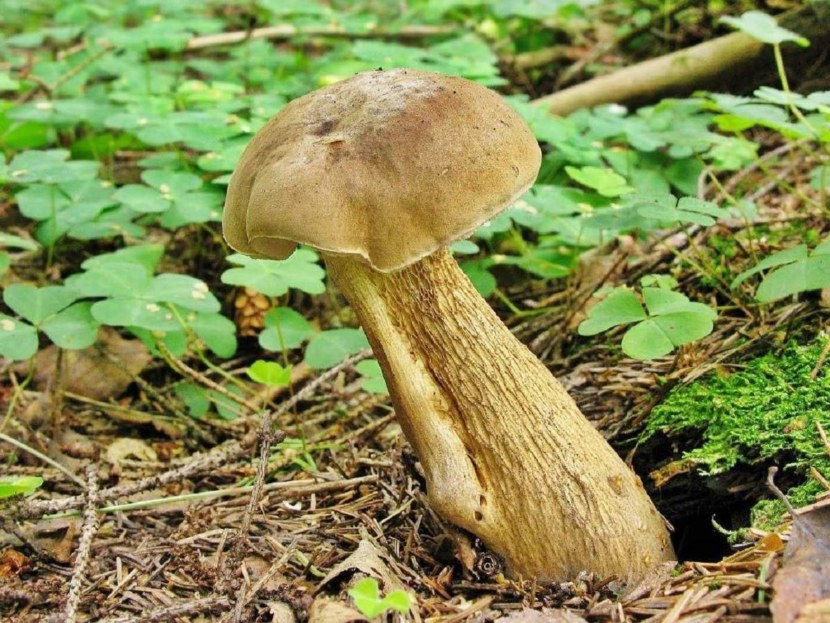
As for the cap, it is many times larger than the stem itself, takes the form of a hemisphere, painted in light brown.

But with age, the gall fungus changes its shade to chestnut, and the cap stretches and is even more convex.
How more fungus years, the stronger the hemisphere is exposed to cracks and fractures, it resembles a pillow. Changes also apply to color - the older the gall fungus, the brighter the yellow-brown hue.

Distinctive feature the amazing inviolability of the false boletus is also considered - not a single chip or dent. This is due to the fact that insects purposefully avoid the mushroom, not daring to taste it. Which is not recommended for humans.

Attention! Don't forget to clarify appearance among the foresters of their region, due to the wide variety of color palettes, representatives of the species can have a “headdress” of both reddish and gray shades.
Where and when does gall fungus grow?
You can see a collection of gall mushrooms in the forest from August until the cold October days, especially low temperatures significantly reduce the period until September. False boletus in most cases prefers exclusively coniferous soils, which are in abundance among the growth of spruces and pines.

Sometimes you can see a representative of the species under a birch, which happens extremely rarely. But bitterness does not like to grow in the wilderness, choosing the outskirts and clinging to the roots of trees (especially a lot near rotten trunks and stumps).
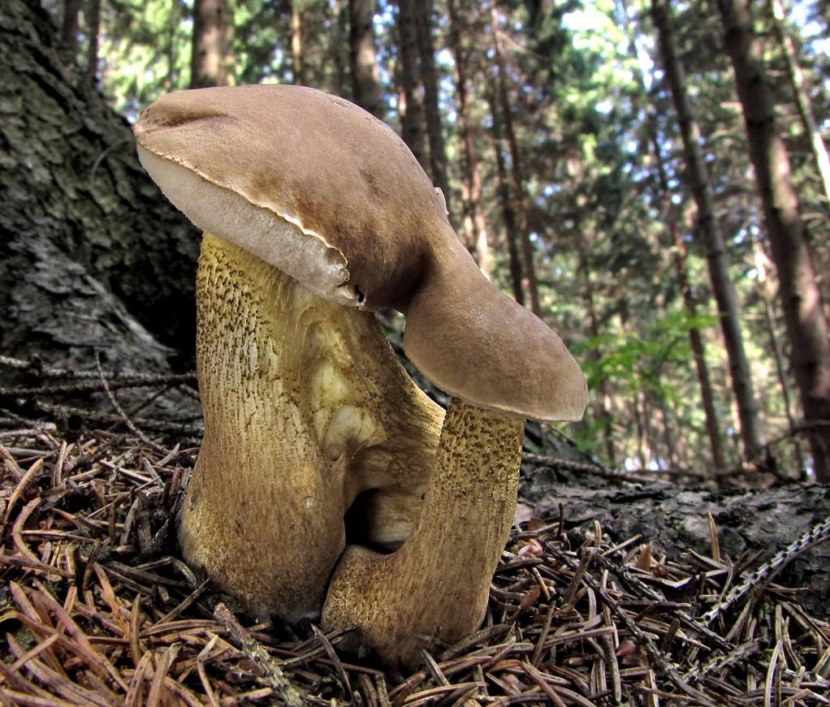
Most often, a single representative or a group in a modest amount is found in one place; it is not possible to see the concentration of bile copies in one sector.

It is for this reason that the gall fungus often ends up in the basket along with the rest, only an experienced specialist can distinguish the substitution.
Bile mushroom. The difference between gall fungus and boletus
And first of all, it is worth mentioning - resettlement useful mushrooms differs markedly from the preferences of the mustard, the same boletus cannot be found near a rotten tree, rhizome or hemp.

The similarity of white and gall mushrooms is undeniable, but even here there are some nuances. For example, pay attention to color scheme"headwear" - a hat white fungus has a dark tint on top and a greenish yellow on the inside, while false white is known for having a pink inside.

The leg should also be of interest to the avid forester - in the porcini mushroom it is pronounced light shade than the mustard. A distinctive feature is the dullness of the mesh on the original representatives, a bitter one cannot boast of this.

And, as mentioned earlier, the gall fungus is never eaten by insects, which cannot be said about the boletus or white mushroom. As can be seen, even such an exact identity has differences.


But, in order to avoid a mistake in the choice, the specialist is advised to look at the photo of the gall fungus before going hunting. So it will be much easier to distinguish the substitution and choose useful product for future meals.
Bile mushroom. Edible or not? Taste qualities
The representative of the species fully justifies the name - just lick the cap of the mushroom, after which bitterness will instantly be felt, and as a result, a burning sensation.

Bitterness, which is produced by the gall fungus, is not destroyed by exposure to high temperatures, neither boiling nor roasting will help - from all this, the amount of bitter substance only increases. Moreover, one piece of gall fungus is enough to “infect” the entire dish.
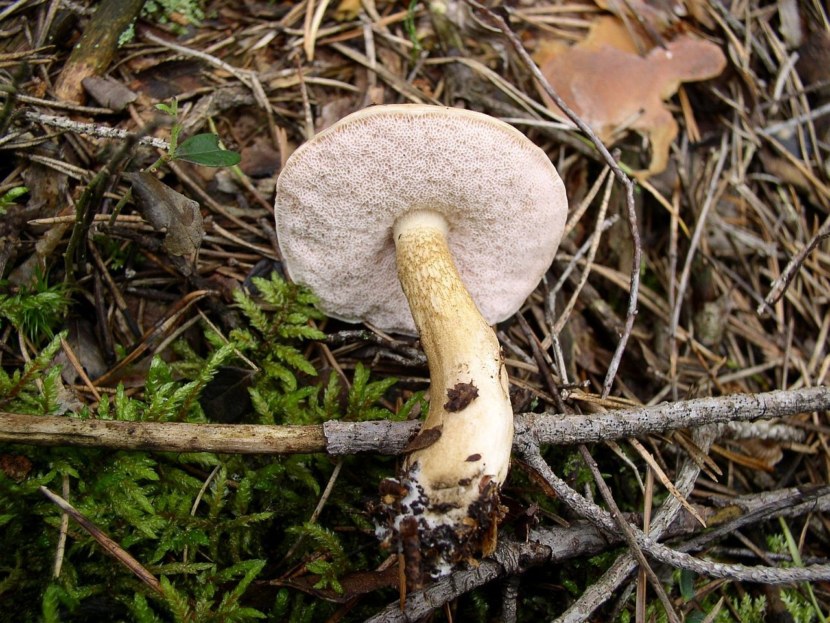
A softening effect is exerted by marinade or vinegar, which make it possible not to notice bitterness in food. But it is still not recommended to use it in order to avoid further health problems.
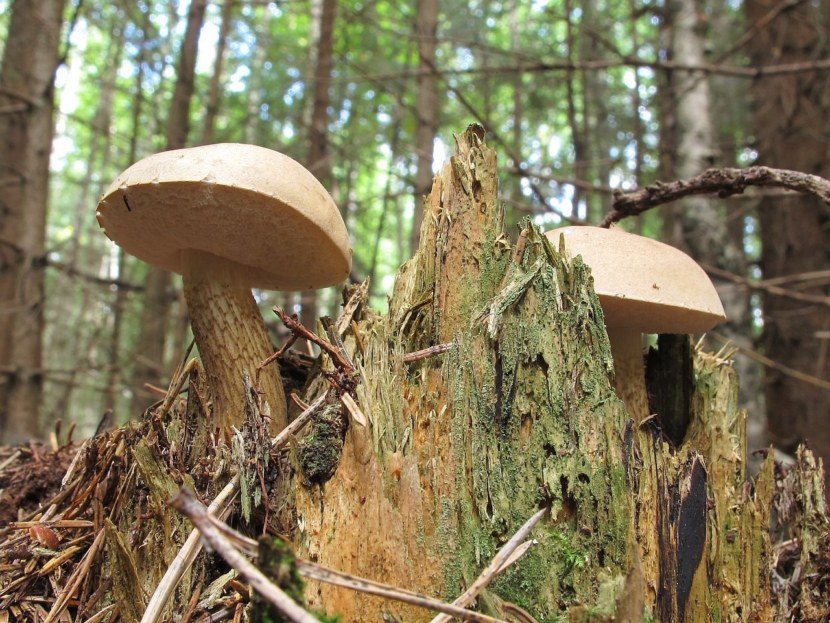
Photo of gall fungus

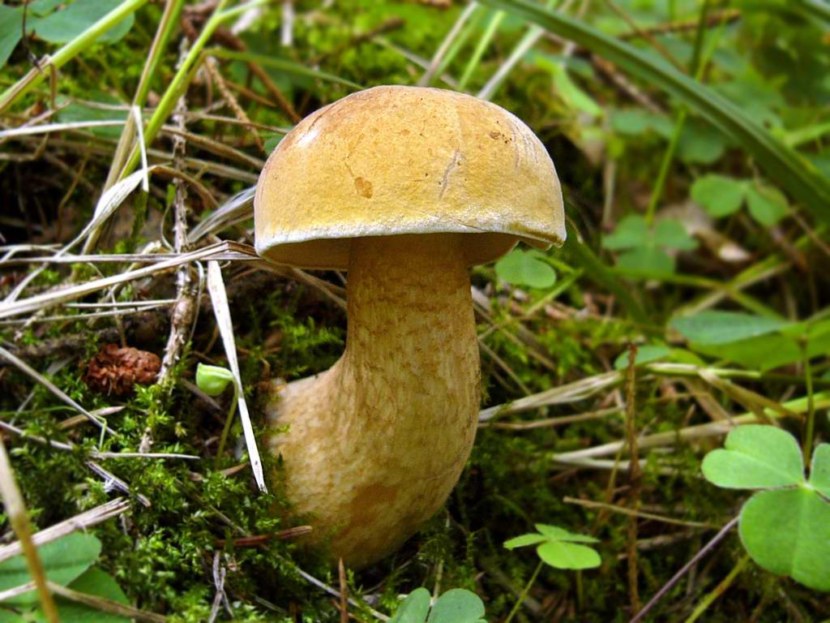


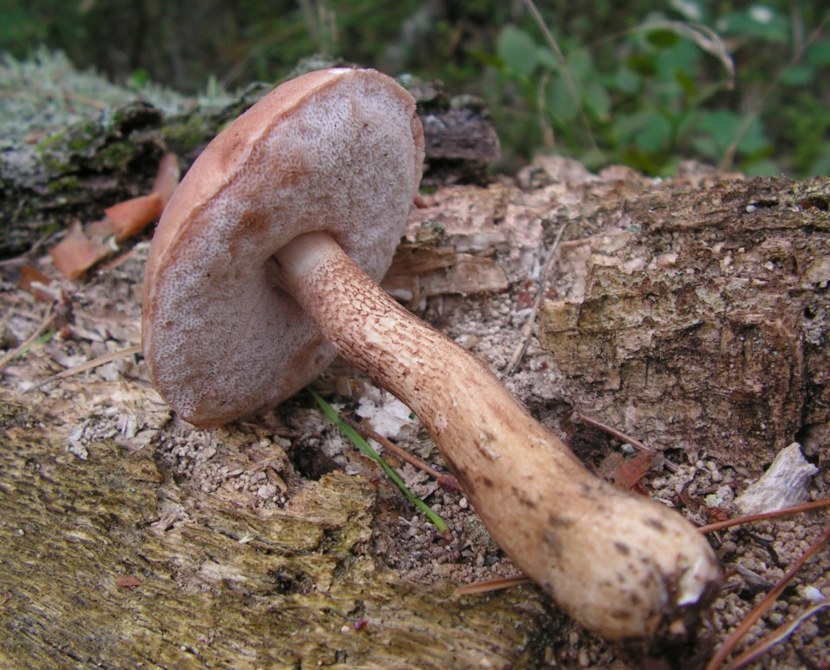



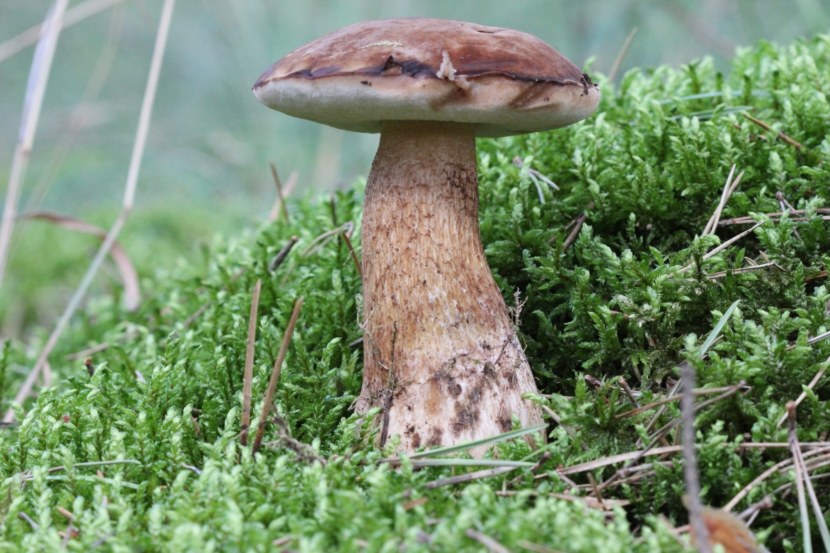

- Primary Habitat
- How to recognize by appearance?
- Taste qualities
- Collection Precautions
- Cooking Precautions
There are many varieties of mushrooms, and sometimes it can be difficult to distinguish a gall fungus from another similar one. After a warm and sunny summer, a golden time comes, bringing its wonderful gifts. Yellowed foliage and fresh light rain make the atmosphere in the forest mysterious and conducive to a wonderful holiday. Autumn is the time for quiet hunting in the forest. It is best to go for mushrooms in September or October, preferably with an experienced specialist, he will be able to distinguish the gall type from the white and edible from inedible.
The gall mushroom, unlike the white mushroom, has a more yellow tint and a scaly leg.
Mushroom hunting - good way take a break from the bustle of the city, stretch your muscles, fill your lungs with clean, coniferous, forest air. Very cool to hunt cheerful company, you can arrange competitions in search of the mushroom meadow itself, and a pleasant bonus after the walk will be the harvest in the basket. Professional mushroom pickers have their favorite mushrooms: chanterelles, mushrooms, milk mushrooms, oaks, porcini. But if you don’t know the varieties well, you can get into an unpleasant and even dangerous situation.
If at least one inedible or poisonous one gets into the harvest basket, then all the other mushrooms will no longer be eaten.
White fungus has several of its twins:
- gall fungus;
- Satanic.
In order not to confuse the boletus with white, and white with false, you should have information.
Primary Habitat

The main habitat is dry coniferous forests, you can sometimes find whites in mixed and deciduous forests. In Russia, these are Western European dark coniferous forests, Karelian taiga, Yakut taiga, East Siberian light coniferous forests. If the summer is warm, then the gall fungus bears fruit quite actively. He prefers well-warmed sandy soil with pine needle fertilizer. Most often found in clearings and forest edges, bathed in the sun. Only the more toxic species hide in dark, poorly lit areas, under large canopy trees. In any part of the country where needles and spruce grow, there is a high probability of finding this mushroom. Also, most often it can be found near old dry trees or rotten stumps.
Mycologist Pierre Bulliard first described this fungus in 1788. He claims that the bile fungus reproduces best along with the roots of pines and spruces, forming mycorrhiza - an alliance between spores higher plants. Such a symbiosis is favorable for both allies in that the mushrooms receive the necessary amino acids and carbohydrates, and the trees, along with water, absorb the necessary for life. useful material.
Back to index
How to recognize by appearance?
Due to its similarity to white, the gall fungus is also called "false white". It has a dense, roundish, convex hat. Sometimes, under certain factors, the hat may be more cylindrical shape. Its diameter is from 4 to 22 cm. The color of the cap is mostly brownish, but sometimes there are brown, yellow and olive shades. The hat has a velvety finish. The tubular layer has a pink or off-white color. The color depends on the age of the fetus: young have a light color, and over time, the mushrooms darken. Leg 5-10 cm in height: from above it is narrow, and closer to the bottom it expands. Most often, the gallbladder has a scaly off-white surface. The leg pattern is similar to a fine mesh.

The white mushroom has a more spherical and convex cap, stands on a massive barrel-shaped stem. The diameter of the cap reaches 25 cm. It grows up to 15 cm in height. It grows preferably under hardwood trees. Depending on the area, it can have a color from white to dark brown. The tubular layer is white, yellow or olive in color. The color of the pulp is always white, even after cooking it does not change. The fungus does not have a pronounced odor. There are 3 types:
- type of boletus: grows under a birch;
- oak type: grows under oaks and lindens;
- pine type: in pine and spruce forests and forest belts.
You can distinguish white from false only by cutting off the leg. On the cut, the leg changes its color. False white mushrooms become pink or purple-blue after a while. Old gall fungi are very bad smell.
Back to index
Taste qualities
White mushroom has almost no taste when raw. Already during cooking, a mild taste and aroma appears. It is served in different options, the mushroom can be fried, baked, marinated. As for the bile, then the opposite is true. Gorchak is another of his nicknames, acquired because palatability. It has a bitter taste when raw.
If you start cooking the mushroom, then the unpleasant smell and bitterness become stronger. Young specimens can be pickled, vinegar kills the bitter taste.
For this reason, bile in some encyclopedias is considered conditionally edible. But for those who have a weak stomach, it is better not to risk it, if the bitter taste accidentally got into the dish, you should not risk your health.
More poisonous mushroom- satanic. Outwardly, it looks like white, but the hat is rougher and the color is darker. Unlike the gallbladder, this specimen begins to accumulate toxins and poisons already at a young age. Studies have shown that 10 g of the satanic plant in its raw form is enough to completely paralyze the work. nervous system person. For cooking, this type is absolutely not suitable.
The gall fungus (Tylopilus felleus), otherwise bitter or false white, belongs to the class Agaricomycetes, the genus Tylopil, the Boletaceae family. It received its second name for its bitter taste and appearance, similar to white.
- The size of the cap is from 4 to 10 or more centimeters, the shape of a hemisphere, which turns into a pillow-shaped with time of ripening. The color is brownish with hints of yellow, hazel or grey. To the touch slightly fluffy, with high humidity - a little sticky.
- The pulp is white, fibrous, when broken it acquires a pink tint. There is no smell. On the tongue leaves a burning sensation, bitterness. Extremely rarely affected by worms.
- The tubes of newly appeared mushrooms are white, gradually acquire a gray-pink hue, up to 2 cm long. When pressed, it turns pink or turns brown.
- The leg of the gall fungus can be described as cylindrical, with a thickening at the base, a maximum height of 4 to 13 cm and a girth of 1.5-4 cm. From light to dark shades yellow color, with the appearance of a pink color on the cut. The mesh is pronounced, rough, dark brown in color.
Spreading
It grows in the forests of all European countries. It occurs frequently, appearing singly or in limited groups. Prefers acidic sandy and sandy-clay soils with large quantity fallen needles.
The bitter fungus forms an equally successful symbiosis with coniferous and deciduous trees, from the roots of which the gall fungus takes useful substances. Most often located at the base of trunks or on rotten stumps.
It actively grows from July to September, it can occur from the second half of June and in October, depending on the weather.
Similar species and how to distinguish from them
Gorchak has his counterparts among useful "brothers". In order not to "disappoint" the entire harvest, you need to be able to distinguish between them.
Similarities
- Sometimes it grows in the same places with white and boletus.
- With white it is similar in shape to the hat.
- With boletus according to its color.
Differences from edible mushrooms
- The difference between the gall fungus and the white fungus is that it has a lighter, usually grayish shade of the cap, a darker mesh on the stem, and a pinkish color of the tubes in adulthood.
- Unlike the boletus, the leg of the gall fungus does not have scales.
- The mesh on the leg is darker than that of the mesh and bronze mushrooms.
Special differences from all mushrooms are a bitter taste and a pink tint of flesh on the cut, which quickly darkens.
Why is it not edible and is it poisonous?
It can be unequivocally said about the gall fungus that it is not poisonous, but it will be impossible to eat it because of the bitter taste, which, after soaking, boiling and canning, is not “masked” by the addition of seasonings and vinegar, but only worsens.
Perhaps, in large doses, gall mushrooms can cause some symptoms of poisoning (dizziness, weakness, intestinal upset, which quickly disappear), but because of the bitter taste, they are rarely eaten. The best thing to do is remember false white in appearance and avoid it.
medicinal properties
Abroad, primarily in France, experiments were carried out in which the following medicinal properties of bitter gourd were identified:
- stimulation of immunity;
- antitumor activity;
- restoration of liver cells;
- antibacterial;
- choleretic.
In this country, preparations from false white are mainly used. They have not received wide distribution around the world.
The mushroom world is too rich and diverse to stop your eyes on false whites. You should not use something that can spoil not only the taste of all the collected mushrooms, but also health.
The gall fungus forms mycorrhiza with many tree species and settles in coniferous and deciduous forests, on the soil, near stumps and trunks, and in drought willingly grows on rotten wood. It bears fruit from June to October throughout the forest zone.
We bring to your attention a photo and description of the gall fungus, a story about it medicinal properties and interesting facts about bitter gourd.
Family: Cone mushrooms (Strobilomycetaceae).
Synonyms: false white, bitter.
Description. Differs in intolerably bitter taste of pulp which does not disappear at heat treatment. According to its description, the gall fungus remotely resembles a boletus, for which it was called a false white fungus.
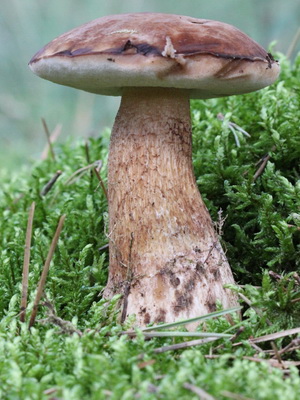

Hat with a diameter of 5-15 cm, convex, cushion-shaped, dry, slightly pubescent, various shades Brown. The tubules are white, dirty pink with age, the tubular layer slightly reddens when touched. The flesh is fleshy, elastic or soft, white, odorless, with a bitter taste or a burning aftertaste, slightly turning pink on the cut. Leg 7-12 X 2-4 cm, swollen, club-shaped, widened towards the base, yellowish-ocher, darker at the bottom, as a rule, one-color with a cap, with a brown-brown mesh pattern or simply with brown fibrous scales.
How to distinguish the gall fungus mustard from other mushrooms
Gorchak can be confused with porcini mushrooms or boletus. If you do not know how to distinguish a gall fungus from its other forest counterparts, take a closer look at its tubes - they are different pink. It is enough to remember what the gall fungus looks like when touched, and you will never confuse it with more noble mushrooms.
Of course, there is a difference in taste as well. When asked whether it is possible to eat a gall mushroom, the answer is obvious - you can eat it, but you will not get pleasure from it because of the strong bitterness.
medicinal properties: A number of active components have been isolated from bitter bitter and have been tested in terms of their ability to medical use. So, for example, tilopilan turned out to be a P-glucan with cytotoxic properties and a stimulator of a nonspecific immune response. In particular, it increases the level of phagocytosis (the process by which macrophages and granulocytes find and destroy foreign microorganisms). In the experiments of Polish researchers on mice with neoplasms (1994), anticancer activity was shown in combination with the suppression of the bacterium Propionibacterium acnes.
Studies of fruiting body extract (2004) revealed extremely high ability inhibition of the hepatic lipase enzyme. A component present in the pulp of fruiting bodies, N-y-glutamyl-boletin, has shown antibacterial activity. The presence of specific bitterness made it possible to consider the mushroom as a choleretic agent.
Poisonous or not gall fungus? Interesting facts about bitter gourd
To the question whether the gall fungus is poisonous or not, there is an unequivocal answer: the mustard is not poisonous, but simply inedible because of its bitter taste. In cooking, this mushroom is not used (when cooking, the bitter taste, as a rule, increases).
One of interesting facts about the gall fungus - its use as a ritual dish. In some regions of the Volga region, the old custom is still preserved to serve not kutya (rice with raisins), but also boiled caps of the gall fungus mustard at the wake. Indeed, this bitter dish perfectly symbolizes the bitterness of loss, farewell to a loved one who has gone to another world.
Due to the external similarity, inexperienced mushroom pickers often confuse the gall fungus with porcini mushrooms or boletus mushrooms. However, there is little benefit from such a trophy. Even a small piece of this mushroom, which got into the pan while frying along with others, can make the dish completely unusable.
The gall fungus is not poisonous, but you should not eat it. No wonder people call it bitter and bitter - the pulp of these mushrooms (especially young specimens) is very bitter, and during heat treatment, bitterness does not disappear, as happens with some mushrooms, but increases several times. Mushrooms like mustard, which for one reason or another are not eaten, are classified as inedible.
Why is gall fungus inedible?
There are many reasons why mushrooms are not considered edible. As a rule, it is impossible to get poisoned by such mushrooms, but it is almost impossible for a person to eat them. Some mushrooms have an extremely unpleasant odor, others are so tough that it is very difficult to chew them, the fruit bodies of others are covered with dense spikes and growths, which makes it difficult to eat them. Some mushroom pickers say that soaking the gall fungus in water helps get rid of bitterness, and vinegar and other spices help mask the unpleasant taste of bitterness in pickles.
However, most fans of "silent hunting" agree that the gall fungus is simply not worth collecting. Interestingly, some people do not feel the strong bitterness of the gall fungus and can safely eat it. It turned out that the reason for this phenomenon is genetic - such people do not have receptors of a certain type that allow them to distinguish between a bitter taste. But what compounds give the bitter taste to the mushrooms themselves is still not known.
Important alliance
This species was first described by the French mycologist Pierre Bulliard in 1788. He attributed this mushroom to the genus of mushrooms. Later, changes occurred in the taxonomy of mushrooms, and experts recorded the inedible mustard in rodtilopilus.
The gall fungus prefers dry coniferous forests, grows near old rotten trees, but is also found on the trunks themselves and collapsing stumps. Quite numerous clusters of mustards can often be found - under favorable conditions, they grow and multiply well. Bile fungi form mycorrhiza with the roots of spruces and pines. Such cooperation between fungal hyphae and the roots of higher plants is beneficial for both members of the union. Mushrooms receive amino acids and carbohydrates necessary for growth, and the tree has the ability to absorb phosphorus compounds and other minerals along with water.
colorful hats
It is not difficult to notice the gall fungus in the forest: strong mustards with round, neat hats look quite attractive. They can be of various shades: there are reddish-brown, yellowish and olive. Like most other mushrooms belonging to the boletaceae family, in dry weather, the cap of mustards feels velvety to the touch, and becomes slippery in rainy weather.
Hymenophore - the layer in which spores ripen - in the gall fungus has a tubular structure. It is located on the underside of the cap and separates from it quite easily. In young mushrooms, the tubules are colored light pink, while in older specimens they darken, acquiring a brownish tint. The leg of the mustard is quite dense, covered on the outside with a dark pattern resembling a grid.
twin mushroom
Another name for the gall fungus is the false white fungus. It is not difficult to confuse bitterness with a dense boletus, porcini and gall mushrooms appear in the forests at about the same time - you can find them from July to September. These mushrooms belong to the same family and are really quite similar.
An important distinguishing feature is the color of the mesh on the stem: it is dark in the bitterling, and in the boletus and its brethren it is a lighter shade. When cut, the white pulp of the mustard acquires a pinkish tint, and the light pulp of the porcini fungus does not change color.
In order not to confuse the gall fungus with the boletus, one should not forget that there are no scales on the stalk characteristic of the boletus.
Some mushroom pickers simply taste the pulp of the mushroom - the sharp bitterness of the gall fungus is felt immediately. However, this is still not worth doing - an unpleasant aftertaste remains in the mouth for a long time.
Mycorrhiza form all gymnosperms and a large number of angiosperms. Pine trees, for example, cannot live at all without mycorrhiza and only thanks to fungi receive the necessary mineral compounds. Other plants can exist without the help of fungi, but mycorrhiza increases the ability of plants to absorb nutrients from the soil several tens of times.
There is a subspecies of the gall fungus, the raw pulp of which has a rather pleasant sweetish aftertaste. However, this mushroom, which outwardly differs in a lighter color of the cap and legs, is not customary to eat. When it is cooked, the flesh also becomes unbearably bitter.
a brief description of
Kingdom: mushrooms.
Department: basidiomycetes.
Class: Agaricomycetes.
Order: pain.
Family: pain.
Genus: Tylopilus.
Type: gall fungus.
Latin name: Tylopilus felleus.
Size: cap diameter - up to 15 cm, leg height - 3-7 cm.
Colour: cap yellowish or dark brown, leg yellow or cream.










